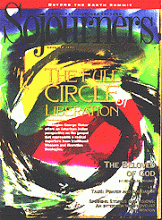In the wake of the Los Angeles uprising, much attention focused on the role of the news media--especially television--in transmitting, live and in real-time, images of random violent events into the homes of Angelenos and the country at large. During the disturbances it was suggested that these live images may have helped speed the spread of the violence by inspiring copycats. After the fact, that same footage is being used to prosecute riot participants, with resulting questions about the role of the media in gathering information for the police.
But in all of this debate we heard very little about the less obvious long-term role that media coverage of urban minority communities played in the events leading up to the LA explosion. For at least the past 12 years, the mass-media practices of selective sensationalism and calculated neglect have resulted in a widely held image of African Americans, and especially young African-American men, as barbaric, violent, animalistic, and dangerous. On television today blacks are gangbangers and drug lords. Predominantly African-American neighborhoods are "war zones." And talk of "civil rights" is solidly identified with condoning criminal behavior.
This was the set of images planted not just in the heads of the cops who "pre-emptively" assaulted Rodney King, but also in the minds of the jurors who acquitted them. And, as self-fulfilling prophecy, in part, it was this image internalized that led some young people in South Central LA to take up looting and violence as an instant response to injustice, in place of more dignified, humane, and constructive options.
Read the Full Article

